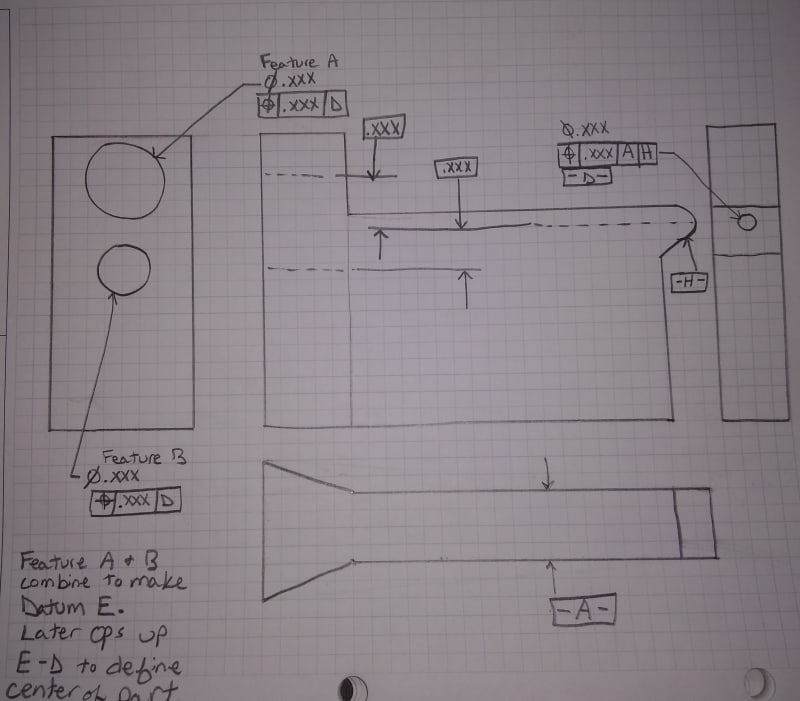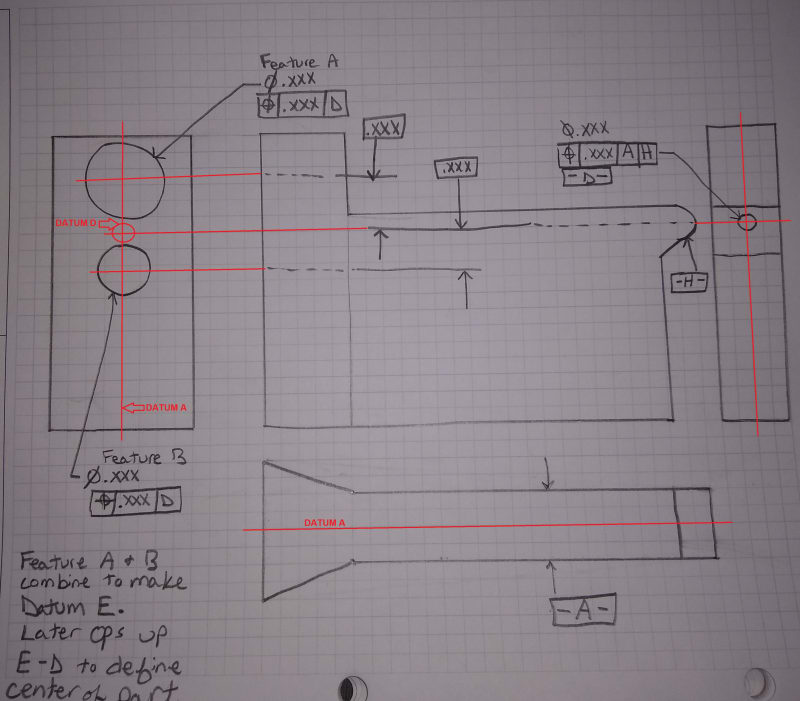herkyengineer
Mechanical
- Nov 19, 2020
- 4
I am looking for some help/ clarification on how to define the datum structure/layout for a part we are making. See figure attached.
I am trying to control Feature A and Feature B to Datum D. These features need to be near .000 to each other left to right (midplane).
I can relate them to datum D but I don't know how to control them to each other left to right (midplane).

The other thing I can think of is to have Feature A and B be datum targets and define datum E with a position back to datum D.
I am trying to control Feature A and Feature B to Datum D. These features need to be near .000 to each other left to right (midplane).
I can relate them to datum D but I don't know how to control them to each other left to right (midplane).

The other thing I can think of is to have Feature A and B be datum targets and define datum E with a position back to datum D.

